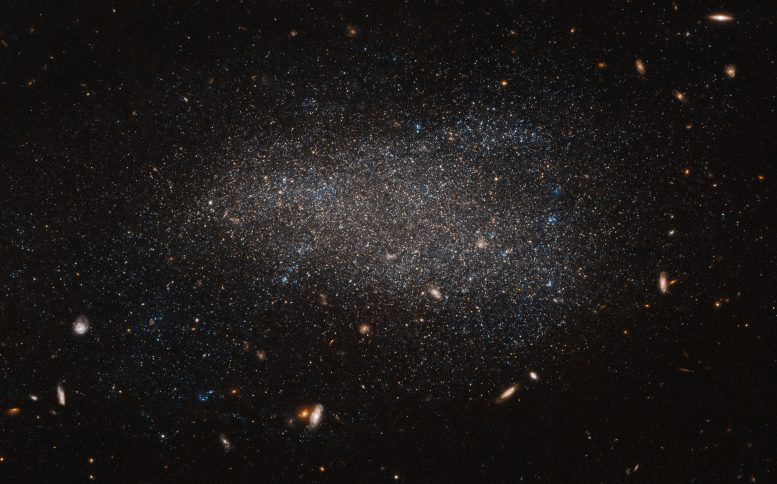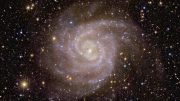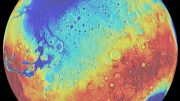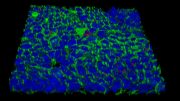
Hubble Space Telescope image of irregular dwarf galaxy NGC 4789A, which is located in the constellation of Coma Berenices. Credit: ESA/Hubble & NASA
This newly released Hubble image shows irregular dwarf galaxy NGC 4789A, which is located in the constellation of Coma Berenices.
It certainly lives up to its name — the stars that call this galaxy home are smeared out across the sky in an apparently disorderly and irregular jumble, giving NGC 4789A a far more subtle and abstract appearance than its glitzy spiral and elliptical cousins.
These stars may look as if they have been randomly sprinkled in the sky, but they are all held together by gravity. The colors in this image have been deliberately exaggerated to emphasize the mix of blue and red stars. The blue stars are bright, hot, and massive stars that have formed relatively recently, whereas the red stars are much older. The presence of both tells us that stars have been forming in this galaxy throughout its history.
At a distance of just over 14 million light-years away, NGC 4789A is relatively close to us, allowing us to see many of the individual stars within its bounds. This image also reveals numerous other galaxies, far more distant, that appear as fuzzy shapes spread across the image.









Maybe it’s center black hole is weaker than most!
There are some very complicated issues of galaxy formation. Unfortunately, here is the same problem as with the stars. The origin of galaxies remains unclear, in spite of huge activity in the field.
What the “formation” means? It means that we have the material that is assembling into galaxies.